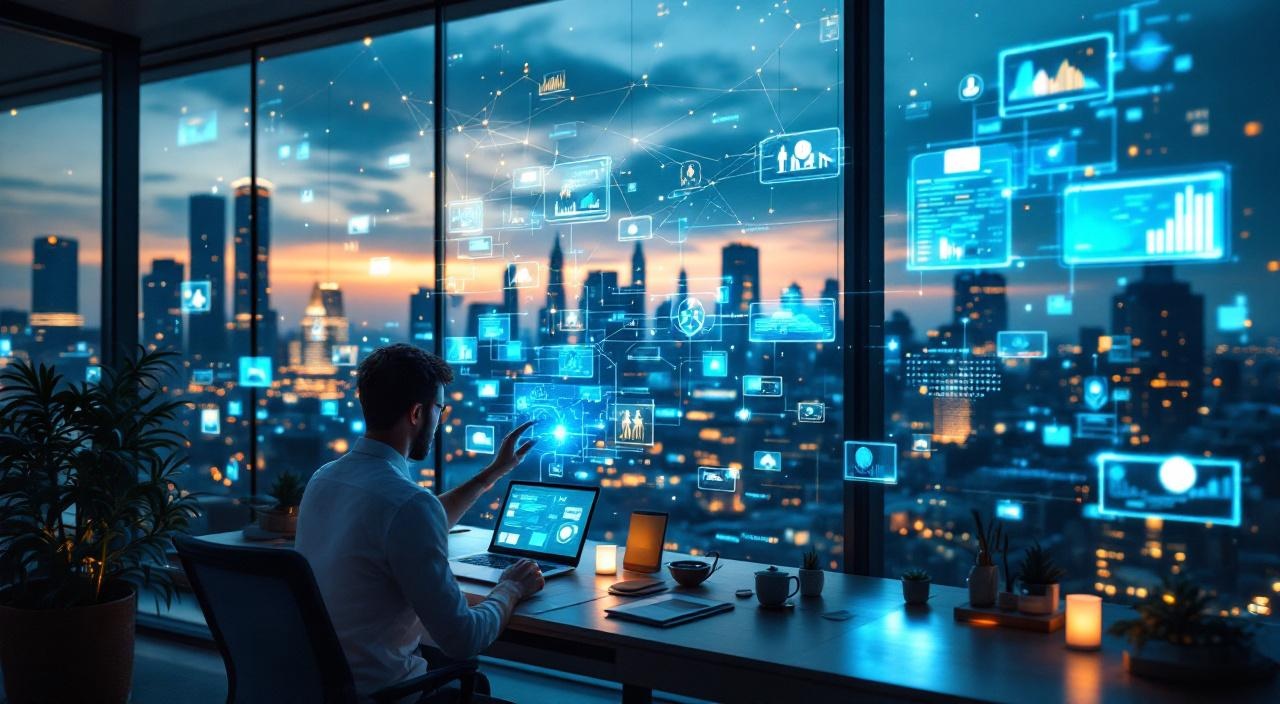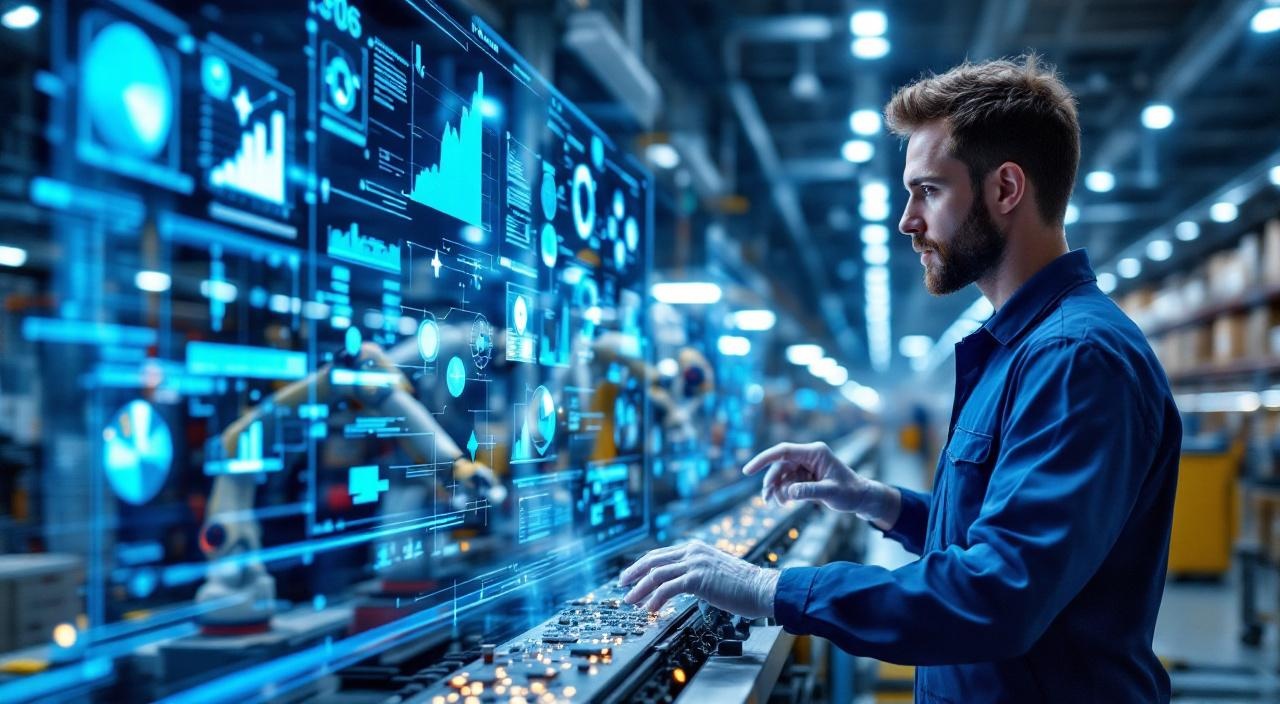Artificial Intelligence acts as an invisible orchestrator of our daily experiences, silently shaping interactions across digital platforms without most people noticing its deep impact. I’ve seen firsthand how AI’s sophisticated algorithms transform how we connect, find information, and make sense of the world around us—from personalized entertainment suggestions to health monitoring that anticipates problems.
Key Takeaways:
- AI powers recommendation engines that predict user preferences with startling accuracy, driving content discovery on platforms like Netflix and Spotify
- Smart assistants leverage natural language processing to understand context and tone, creating increasingly personalized communication experiences
- Navigation apps use machine learning to predict traffic patterns and optimize routes in real-time for millions of users
- Social media platforms deploy complex algorithms that curate content specifically designed to maximize user engagement
- Advanced AI systems are revolutionizing industries like healthcare and manufacturing by providing predictive insights and enhancing human capabilities
Ever felt like your devices know what you want before you do? You’re not alone. I remember when I first noticed how eerily accurate Netflix recommendations had become. The AI behind these systems doesn’t just track what you watch—it analyzes patterns across millions of viewers to identify connections humans might miss.
These recommendation engines represent just one facet of AI’s transformation of our daily lives. The technology has quietly integrated itself into nearly every digital interaction we have.
Smart assistants have evolved beyond simple command execution. They now grasp context, remember preferences, and respond to emotional cues in your voice. This natural language processing capability makes interactions feel less mechanical and more human-like.
Here’s what I mean: When you ask your phone about restaurants while in a new city, the AI doesn’t just search for nearby options—it considers your past preferences, the time of day, and even local popularity to give you relevant suggestions.
Traffic prediction offers another perfect example of AI working behind the scenes. I’ve watched this technology advance from basic GPS to systems that accurately forecast congestion before it happens. These apps analyze millions of data points from other drivers, historical patterns, and even weather conditions to save you time on your commute.
Let that sink in.
Social media feeds present perhaps the most significant example of AI’s hidden influence. The content appearing in your feed isn’t random—it’s carefully selected by algorithms designed to maximize your engagement. Strange but true: these systems know which posts will hold your attention better than you might know yourself.
But wait – there’s a catch: This personalization can create information bubbles where we only see content that confirms our existing beliefs. I’ve written extensively about how AI is changing what it means to be you, including how these algorithms shape our perceptions.
The good news? AI’s reach extends far beyond entertainment and social media. In healthcare, AI systems analyze medical images with incredible precision, often catching details human doctors might miss. Manufacturing facilities use AI to predict equipment failures before they happen, saving millions in downtime costs.
For business owners like yourself, understanding these AI applications isn’t just interesting—it’s essential for staying competitive. I’ve guided numerous small businesses through AI implementation for appointment-based services and seen remarkable efficiency gains.
The real question isn’t whether AI will impact your industry, but how quickly you’ll adapt to the changes it brings. As I’ve told many clients (you can see their testimonials here), those who embrace these technologies thoughtfully gain significant advantages over competitors who ignore them.
For entrepreneurs seeking practical first steps, I suggest exploring how AI can automate routine tasks in your specific business. Start small, measure results, and expand your implementation based on clear ROI.
AI’s invisible presence will only grow more influential. Those who understand its capabilities and limitations will find themselves better prepared for a future where human ingenuity and artificial intelligence work in concert rather than competition.
The Silent Symphony of Recommendation Engines
Your Netflix queue doesn’t build itself. Behind every “you might like this” suggestion lies sophisticated AI pattern recognition that’s constantly learning your viewing habits.
I’ve watched this technology evolve from basic genre matching to something almost telepathic. Netflix revealed that 80% of their content gets discovered through AI recommendations rather than browsing. That’s not luck—that’s algorithmic precision at work.
Spotify operates similarly, analyzing your skip patterns, replay habits, and listening times to craft those eerily accurate Daily Mix playlists. The AI doesn’t just track what you play; it studies when you stop, what you repeat, and how your mood shifts throughout the day.
AI agents like these don’t replace human taste—they amplify it by processing millions of data points you’d never consciously consider. They’re predicting your preferences better than you do, creating that “how did it know?” moment that makes AI feel almost magical.

Smart Assistants: Your Invisible Communication Bridge
I can’t count how many times I’ve watched someone ask Alexa to play their favorite song, completely oblivious to the complex AI magic happening behind the scenes. Natural Language Processing technology powers every single interaction you have with Siri, Alexa, or Google Assistant.
Strange but true: These systems process billions of voice queries annually, yet most people think they’re just fancy speakers with internet connections. The reality? You’re having conversations with sophisticated AI that understands context, tone, and even your mumblings at 6 AM when you ask for the weather.
The Technology That Reads Between Your Words
Here’s what happens when you say “Hey Siri, remind me to call mom tomorrow.” The system breaks down your speech into phonemes, converts them to text, analyzes grammatical structure, and extracts intent. All this occurs in milliseconds while you’re still talking.
AI Agents Won’t Replace You—But They Might Change What It Means to Be You explores how these technologies reshape our daily interactions without us realizing it.
Building Emotional Connections Through Technology
Your smart assistant learns your speech patterns, preferred phrasing, and even your accent over time. This creates an invisible bond where the AI adapts to you rather than forcing you to adapt to it.
The twist? You’re training these systems every time you speak. Your corrections, repetitions, and clarifications feed back into the learning process, making them smarter not just for you, but for millions of other users worldwide.

Navigation and Real-Time Intelligence
I’ve watched AI quietly transform how we move through the world. Over 1 billion monthly map users rely on machine learning algorithms that process traffic patterns, accidents, and road conditions in real-time.
Your smartphone’s navigation app doesn’t just show you the fastest route. It predicts where traffic jams will form before they happen. Google Maps and Waze collect data from millions of drivers simultaneously, creating a living network of intelligence that adapts every second.
Strange but true: Your phone knows you’ll hit construction delays on Route 95 before the first orange cone appears. The system analyzes historical patterns, current conditions, and collective user behavior to route you around problems that haven’t fully developed yet.
How This Intelligence Works
The technology combines:
- Satellite data
- Smartphone sensors
- Crowd-sourced reports
Each device becomes a data point, feeding information about speed, location, and road conditions back to central processing systems.
Modern AI can predict your arrival time with startling accuracy—often within minutes of your actual arrival. That’s computational power working behind the scenes, making split-second decisions you never see.

Social Media and Algorithmic Engagement
Every scroll through your feed involves AI making split-second decisions about what you see next. These algorithms analyze your past behavior, time spent on posts, and engagement patterns to predict what will keep you hooked.
The numbers don’t lie. Users spend an average of 52 minutes daily on platforms like TikTok, Instagram, and Facebook. That’s nearly an hour of AI-curated content designed specifically for you.
The Attention Economy Machine
Behind every “For You” page sits a complex system analyzing thousands of data points. Your likes, shares, comments, and even how long you pause on a video all feed into these recommendation engines. The goal? Keep you engaged and scrolling.
This isn’t random content delivery. AI systems track which posts make you laugh, which ones you skip, and what topics consistently grab your attention. AI agents have fundamentally changed how we consume information, creating personalized echo chambers that feel perfectly tailored to our interests.

Invisible Protection Systems
Your email inbox stays clean thanks to AI working behind the scenes. Gmail’s machine learning classifiers achieve 99.9% spam detection accuracy, scanning billions of messages daily. I’ve watched this technology evolve from simple keyword filters to sophisticated pattern recognition systems that adapt to new threats in real-time.
Credit card companies deploy similar AI guardians to protect your finances. These algorithms analyze transaction patterns, flagging suspicious purchases before fraudsters can drain your account. Banks save consumers billions annually through automated fraud detection systems that never sleep.
Your Digital Bodyguards
Modern cybersecurity relies on AI-powered systems that identify threats faster than any human analyst could manage:
- Email providers scan attachments for malware using behavioral analysis
- Banking apps monitor spending patterns to detect identity theft
- Social media platforms filter harmful content using natural language processing
- Web browsers block malicious sites through real-time threat intelligence
These protection systems work invisibly, requiring zero input from you. They’ve become so effective that most users never realize how many digital attacks get blocked daily. AI agents handle the heavy lifting while you focus on your actual work.
Personalized Health and Performance Tracking
Your Apple Watch just vibrated. A gentle reminder to stand after sitting for an hour. You might think it’s a simple timer, but there’s sophisticated AI working behind that tap on your wrist.
I’ve watched this transformation firsthand. When Apple shipped their first 100 million watches, they weren’t just selling timepieces. They were deploying AI health monitors that learn your patterns, predict your needs, and adapt to your lifestyle.
How AI Transforms Your Health Data
Your Fitbit doesn’t just count steps. It analyzes your heart rate variability, sleep cycles, and movement patterns to build a personalized health profile. The AI algorithms running on these devices can:
- Detect irregular heart rhythms
- Predict when you’re getting sick
- Suggest optimal workout times based on your recovery data
Picture this: your wearable notices your resting heart rate is elevated for three consecutive mornings. The AI flags this as a potential illness indicator before you feel symptoms. That’s predictive healthcare in action, quietly working to keep you healthy.

Manufacturing and Operational Intelligence
Smart factories aren’t science fiction anymore. They’re running 24/7 right now, powered by AI systems that predict equipment failures before they happen.
Predictive Maintenance Revolution
Manufacturing giants like Siemens and GE have cracked the code on preventing costly breakdowns. Their AI systems analyze vibrations, temperature fluctuations, and sound patterns from machinery. The result? A stunning 50% reduction in unplanned downtime.
Picture this: sensors embedded in production equipment continuously feed data to AI algorithms. These systems learn normal operating patterns and flag anomalies that humans might miss. A slight change in motor vibration could signal bearing wear weeks before failure.
I’ve seen this transformation firsthand in electronics manufacturing. Where we once relied on scheduled maintenance that often came too early or too late, AI now tells us exactly when intervention is needed. No more replacing perfectly good parts or dealing with surprise breakdowns during critical production runs.
Process Automation Intelligence
Industrial AI goes beyond maintenance. It optimizes entire production workflows in real-time. Quality control systems powered by computer vision inspect thousands of products per minute, catching defects that would slip past human inspectors.
The integration of IoT sensors with AI creates a feedback loop that continuously improves efficiency. Temperature adjustments, speed modifications, and material flow changes happen automatically based on real-time analysis.
This isn’t just about AI automation for efficiency. It’s about creating resilient manufacturing systems that adapt and learn. The hidden AI hand shapes every product rolling off modern assembly lines, ensuring consistent quality while reducing waste and energy consumption.

Medical Diagnostics and AI Assistance
Your doctor’s diagnosis might be getting a silent assist from artificial intelligence.
I’ve watched this technology transform healthcare from the inside out during my consulting work with medical practices. The numbers tell a compelling story: diagnostic technologies now achieve up to 94% accuracy in image interpretation, often catching details human eyes might miss.
Picture this: when you get an X-ray or MRI, AI algorithms scan those images milliseconds after they’re captured. They’re hunting for patterns, shadows, and anomalies that could indicate cancer, fractures, or other conditions. The radiologist still makes the final call, but they’re armed with AI-powered insights that make their job more precise.
Mayo Clinic has been pioneering this approach, using AI to detect everything from eye diseases to heart conditions. IBM Watson Health takes it further, analyzing vast databases of medical literature to suggest treatment options doctors might not have considered. These aren’t futuristic concepts—they’re happening right now in hospitals across the country.
Here’s what makes this particularly powerful: AI doesn’t get tired during a 12-hour shift or miss subtle patterns after reviewing hundreds of scans. It provides consistent, focused analysis that complements human expertise rather than replacing it.
The real breakthrough isn’t just accuracy—it’s speed. Conditions that might take days to diagnose can now be flagged within hours. For stroke patients or those with aggressive cancers, those saved hours can mean the difference between recovery and permanent damage.
This technology is already working behind the scenes, making healthcare more reliable and revolutionizing how we approach medical care at every level.

Sources:
• Tygocover.com
• Bernard Marr
• Mayo Clinic
• IBM Watson Health








